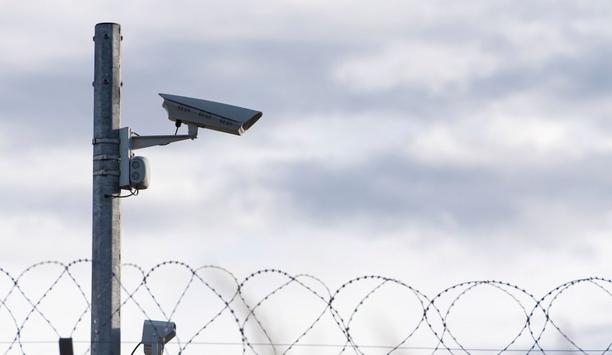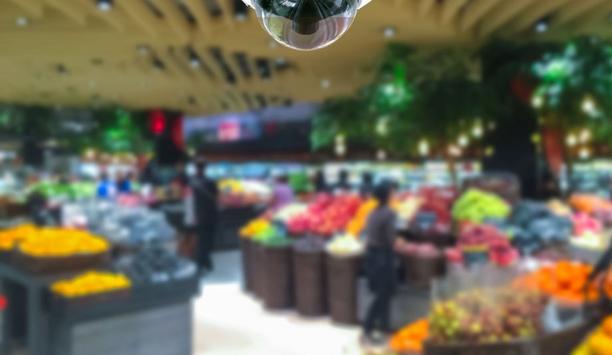Today's CCTV systems are unrecognisable from the basic camera and monitor configurations that first appeared in the 1960s. Here, Bewator's video systems specialist, Jon Hill, takes a look at the development of CCTV technology and examines the capability of the latest generation of systems.
The UK's very first video surveillance system was installed by London Transport in 1961. The system was basic, consisting of two, black and white cameras which were connected by coaxial cable to basic monitors; few could have predicted the impact that CCTV systems would have on the safety and security industry over the following decades.
From these relatively humble beginnings, CCTV systems were introduced progressively throughout the 1960s and 70s across an ever-broadening range of applications, including underground trains and stations, football stadiums, retail stores, shopping centres, local authority housing estates and car parks. Their primary application, initially focused on security and safety, but, as with all developing technology, potential benefits were soon identified for new applications, such as traffic management and public order control (for instance, CCTV was used extensively to monitor the miners' strike in 1984-85).
However, looking back, it is apparent that the basic technology evolved very slowly during this period, the only real developments being the adoption of solid-state cameras and the integration of VCRs.
‘First generation' CCTV technology was initially impeded by some fairly major performance related problems. Fundamental issues relating to the recording process were commonplace and accepted as unavoidable at the time. Not only were early VCRs temperamental, but also the quality of the recordings achieved often left a lot to be desired. The combination of low resolution camera images, poor quality video tapes and low specification recording heads often meant that grainy and unclear images couldn't be relied on even for basic identification purposes - let alone be used for evidential purposes.
The functions that we take for granted today were difficult, or in some cases impossible to carry out in these early days. For example, the VCR technology couldn't allow the operator to review and record events simultaneously and it was a very time consuming process to find and review specific events. There was no motion detection facility and no way of viewing events from a remote location.
As with a lot of new technology, even though early CCTV systems provided only relatively basic functionality and moderate performance, they were quite expensive - both in terms of the initial equipment cost and installation. At first there was also a lack of qualified and skilled installers, but this was, after all, an industry in its infancy.
In the 1990s however, the ‘second generation' CCTV system arrived, representing a significant step forward in technology. Behind the new technology was the Digital Video Recorder (DVR), which allowed images to be recorded at much higher resolution than had previously been possible and in one fell swoop eradicated the major cause of problems with first generation systems - the videotape!
This leap forward signalled an explosion in the use of CCTV. In 1992, the first street-based video surveillance system was commissioned in Newcastle comprising 16 cameras. By 1996, every major city in the UK (with the exception of Leeds) had a CCTV system.
While second generation system quality represented a major step forward, ‘third generation' took advantage of a quantum leap in technology - IP-based systems - which transformed CCTV.
Using IP (Internet Protocol) technology, digital networks allow cameras to be controlled over a local area network (LAN), a wide area network (WAN) or via the Internet. With such flexible access, the modern generation of CCTV cameras may be operated remotely from a control centre or, in fact anywhere with Internet access - given the correct security protocols. Equally, high quality digital images may be streamed anywhere and captured at a convenient and secure location.
But it isn't only the operating platform that has developed significantly; camera technology too allows far more functionality. Today's generation cameras can of course pan, tilt and zoom but they are also capable of operating in ‘night vision' or ‘motion detection' mode and under the shelter of bulletproof camera housings. Sophisticated functions, such as alarm management allow the user to specify when the camera should send video and in what format. Images are also now at broadcast quality with definition so sharp that an operator can zoom in to, and recognise, an individual playing card from a camera distance of 100 metres.
Audio is also now an integral part of CCTV technology, such that an operator is now able to synchronise motion based video events with audio analysis. Two ways audio transmission via Ethernet enables instant clarification of alarm events with a date stamped record of any verbal communication. Clearly, this allows the operator to question possible intruders, give instructions to staff and to record/search/replay in both audio and visual form.
Systems are also required to be compatible retrospectively with earlier technology, and offer the ability to adapt to new technology as it enters the mainstream. And today's digital systems do just that - they are scaleable, flexible and future proof. Digital and analogue systems can work together and may in turn be integrated with a broad range of other management systems, such as access control and building management systems. For example, Bewator 2010 is a unique security system, which fully integrates intruder alarm, access control, video management, and fire warning systems.
It was in the 1990's that Siemens entered the field of video control, when it acquired Molynx Videmech in 1999, although Bewator was founded in 1977, we had specialised in just access control up until this point. We started to develop and manufacture integrated solutions for the video market, such as the SOLARIS dome camera, which is known for its levels of speed, accuracy and configurability.
CCTV has certainly come a long way since the 1960s; from two cameras on a London station in 1961, Network Rail now has 2,500 cameras covering it's ten mainline stations in London with a further 6,000 cameras covering the Underground. And with that figure set to double in the next five years, it's clear that the future of CCTV is secure and that technology will continue to develop to meet the changing needs of the market.
More about Siemens Building Technologies Security Products















